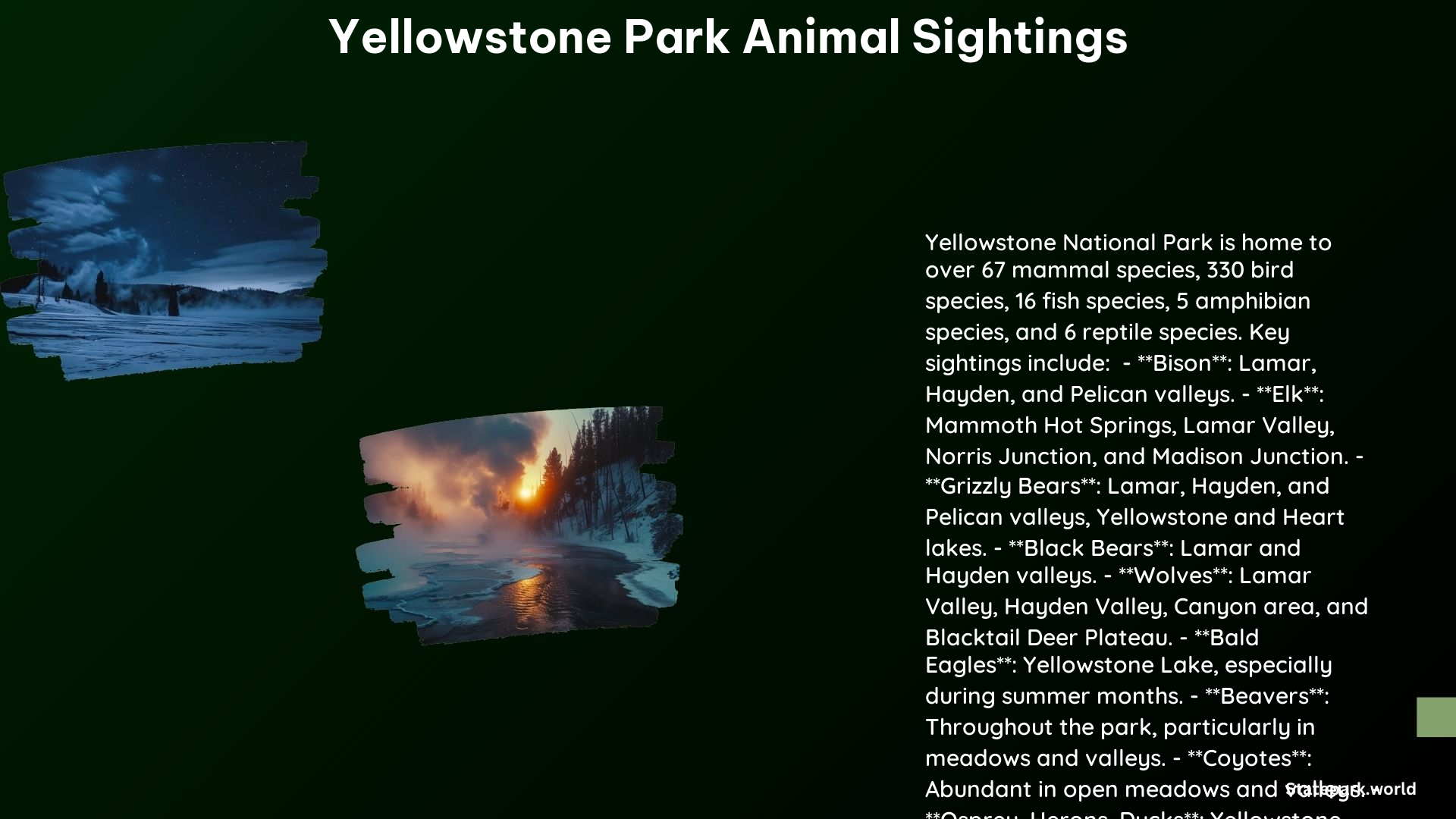Yellowstone National Park is renowned for its incredible wildlife viewing opportunities. From majestic bison to elusive wolves, the park is home to a diverse array of animal species that captivate visitors from around the world. In this comprehensive guide, we’ll explore the best places to spot wildlife in Yellowstone, share tips for enhancing your viewing experience, and provide information on how to report rare sightings.
Where to See Wildlife in Yellowstone
Yellowstone National Park offers numerous prime locations for wildlife viewing. Here are some of the top spots to keep an eye out for the park’s most iconic animals:
Black Bears
- Lamar and Hayden valleys in Yellowstone
- Two Ocean/Emma Mathilde lakes, Colter Bay, and Teton Park Road in Grand Teton National Park
Grizzly Bears
- Lamar, Hayden, and Pelican valleys in Yellowstone
- Willow Flats, Two Ocean/Emma Mathilde lakes, Oxbow Bend, Cascade, and Death canyons in Grand Teton National Park
Wolves
- Lamar Valley, Hayden Valley, Canyon area, and Blacktail Deer Plateau in Yellowstone
- Willow Flats in Grand Teton National Park
Bison
- Lamar, Hayden, and Pelican valleys in Yellowstone
- Snake River from Jackson Lake Dam south to Moose, Wyo., in Grand Teton National Park
Elk
- Mammoth Hot Springs, Lamar Valley, Norris Junction, and Madison Junction in Yellowstone
- Teton Park Road and Willow Flats in Grand Teton National Park
Tips for Finding Wildlife in Yellowstone

Maximizing your chances of spotting wildlife in Yellowstone requires a combination of timing, equipment, and knowledge. Here are some tips to enhance your wildlife viewing experience:
Timing
- Early morning and late afternoon are the best times for wildlife viewing, as animals are most active during these periods.
Equipment
- Bring binoculars or a high-powered spotting scope to get a closer look at the animals.
Guided Tours
- Consider joining a guided wildlife watching tour, as experts know the latest sightings and how to locate hard-to-see animals.
Safety
- Maintain a safe distance of at least 100 yards from bears and wolves, and 25 yards from other wildlife.
Reporting Rare Wildlife Sightings
If you’re fortunate enough to spot a rare or unusual animal in Yellowstone, it’s important to report your sighting to the appropriate authorities. Here’s how you can do so:
Bears
- If involved in a conflict with a bear, contact park rangers or dial 911.
- For other bear sightings, email the bear management program.
Rare Birds and Raptors
- Email sightings to the bird program biologists.
Rare Animals
- Report observations of amphibians, reptiles, rarely-seen mammals, unusual behavior, or atypical locations of common animals to the Yellowstone Center for Resources.
Additional Resources
To further enhance your wildlife viewing experience in Yellowstone, consider the following resources:
Bear Sighting Reports
- Check the Yellowstone National Park Bear Sighting Reports page for information on where and when bears have been seen in the park.
Wildlife Watching Tours
- Join guided tours to increase your chances of spotting wildlife and learn more about the park’s diverse species.
Safety Reminders
While exploring Yellowstone in search of wildlife, it’s crucial to prioritize safety for both yourself and the animals. Remember to:
Keep a Safe Distance
- Maintain a safe distance from all wildlife to avoid conflicts and ensure both human and animal safety.
Be Aware of Your Surroundings
- Pay attention to your environment and watch for signs of wildlife, such as tracks, scat, or other indicators.
By following these tips and guidelines, you’ll be well on your way to having an unforgettable wildlife viewing experience in Yellowstone National Park. Happy exploring!
